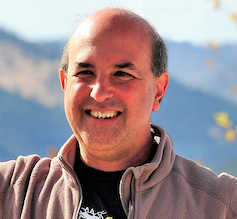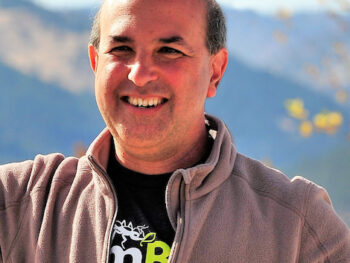Many of us use video clips in our classes, both to illustrate ideas and to engage students. As a colleague recently told me, “somehow I can say exactly the same thing, but if it’s on TV, it’s instantly much more interesting”. A workshop I am just returning from took this premise to Hollywood, attempting to bring together people working in movies, TV, and other entertainment media with scientists, teachers, and other educators. The idea was to spark collaborations between the entertainment and education folks that would make Hollywood more useful for teaching science.
Like most big one day events, I’m not sure how much actual progress will come out of this, but there were a lot of entertaining talks, and two funding announcements. If you have ideas for using Hollywood-like (or gaming industry) techniques in science classes, you might look at this call for proposals [link outdated, so removed. ED] from the Moore foundation, or look for forthcoming information from Sean Carroll’s group at HHMI who announced that they are going to invest $60 million in a new set of science videos. But just listening to a few of the speakers might be more fun.
One of the most entertaining was Ken Robinson, an expert on “creativity” and education, who you can find a clip of here. He actually had a definition for creativity – ‘The process of having original ideas that have value’ – which sounds good, at least until you start asking what ‘original’ means. His claim was that schools are doing a poor job of teaching creativity (no argument from me in the No Child Left Behind era) and he has some concrete ideas on how to change that. A researcher at Pixar, Tony DeRose, talked about how he is teaching creative engineering to his kids and other kids in his neighborhood by having them make stuff and then display it in Maker Faires, which are apparently very popular events. Latest creations of his teenagers – a fire-breathing dragon and a really fancy potato gun.
Game designer Wil Wright, who made Sim City and the Sims, argued that there are two natural modes for learning built into our psychology: storytelling and play. In play, in particular, he argued that failure is important. To learn, you need to try and fail many times, and in fact, those failure states are often more engaging to learners than success. His claim (I agree) is that failure is missing from most educational curriculum. He also had some of the best quotes of the day, such as “I wish there was a knob on the TV to turn up the intelligence. There is a knob called brightness but that doesn’t work.” (I forget the attribution). Other speakers also emphasized the role of stories for engagement, even stories that have a lot of scientific nonsense in them, claiming, for instance, that after the X-Files series started on TV, the number of woman going into science and engineering noticeably increased.
Out of all this, the theme that emerged for me was that Hollywood and the gaming industry really know how to engage people, and science teaching might learn from (and co-opt) their strategies. In science education, we know already that we don’t have enough play in our classes – we call many of our labs “cookbook” and our other main modes of instruction, lecture and textbook reading, are one-way and passive. It’s not news that we could do better at engagement, but what it reinforced for me was how important the storytelling is. That’s something we spend a lot of time thinking about at SimBio when writing our interactive chapters. We always try to have one or two stories running through each chapter, but some topics just lend themselves to good stories more than others. Similarly, when I teach, I like to have a storyline running through each class period. After this conference, I plan to emphasize those stories even more.







